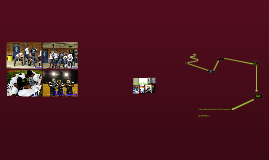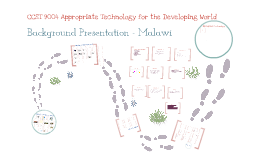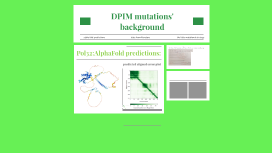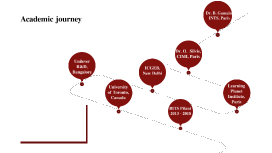Academic Background
Transcript: Academic Background (2004 - ) Phd Thesis The topics I usually choose to venture into allow me to learn about the forms and meanings of everyday life, focus on questions of identity, meaning, representation, power and authority. Published Articles While working on my master and PhD thesis,I had 2 articles published in a Thomson Reuters indexed international journal (IJHCS). American Public Schools' Struggle with Daily Violence: Prevalence, Concerns and Prevention. (which can be considered as an addendum to the last chapter of my current thesis). Research Spotlight on Single-Sex Education and the Challenging Entailments. (assessed as a lengthening to a major theme in my MA dissertation revolving around American public schools). Master's degree Meanwhile, I did not rest on my laurels, I enrolled in master's degree, defended my thesis and got my master diploma in American civilization with distinction (very good). (Religion and Education in American Public Schools: The Challenge of a Possible Reconciliation) Studying history and civilization provides a storehouse of information about how people and societies behave. It also increases my appreciation of the origins of hostilities and conflicts that resulted in, and sometimes still ignite, present disputes. Pedagogy and Strategies Learning Objectives 1/ Terminal Objective 2/ Enabling Objectives 2/ Engage-Study-Activate (ESA) Engage: This is the point in a teaching cycle where I try to arouse the students interest and emotions. Study: During study activities, students are asked to focus on language (or information) and how it is constructed. They range from the study and practice of a single sound to an investigation of how a writer achieves a particular effect in a long text. => a stage at which the construction of language is the main focus. Activate: This stage involves exercises and activities which are designed to enable the students to use language as freely and communicatively as they can. The objective for the students is not to focus on language construction and/or practice specific language patterns (grammar, particular vocabulary items or functions) but to use all and any language which may be appropriate for a given situation or topic. 1/ Terminal Objective (performance) Teaching Methods The learner is supposed to reach the terminal objective or the performance at the end of the lesson, as a result of his engagement/undertaking in a learning activity. The Terminal Objective should be written from the perspective of what the learner will be able to do at the end of the session, and not what the instructor will teach during the lesson. Approach In accordance with my educational philosophy (along with the school mission statement which defines my teaching methods), teachers and students play an equally active role in the learning process. As a teacher, my primary role is to coach and facilitate the student's learning process which is measured through both formal and informal forms of assessment: group projects, student portfolios, and class participation.. =) Teaching and assessment are connected. *Teaching methodologies (some examples of the adopted and adapted methodologies for teaching English as a foreign language) 1/ One of the established methodologies is known as 3Ps or PPP – Presentation (presentation of an aspect of language in a context that students are familiar with), Practice (where students will be given an activity that gives them plenty of opportunities to practice the new aspect of language and become familiar with), Production (where the students will use the language in context, in an activity set up by the teacher). Depending on my students' abilities and levels (mixed-abilities class, mostly high-achievers or predominantly low-achievers), I usually select techniques from various approaches according to the different needs of my students . My teaching approaches are learner-centered, interactive, constructivist, and collaborative. =) Approaches vary in the degree of teacher and learner engagement ( T-L) , interaction ( L-L or L-T) focus ( subject matter), and the number of learners involved in the teaching-learning process ( individual - group). 2/ Enabling objectives The Enabling Objectives are supporting objectives for the terminal Objective. Each enabling objective addresses a component of the terminal objective and helps track the learner's progress towards that objective. The Enabling Objectives outline the steps necessary for a learner to acquire new skills and knowledge leading to the performance level stated in the Terminal Objective. Similar to the Terminal Objective, the Enabling Objective is written from the perspective of the learner and what he or she must do to accomplish the Terminal Objective. While the Terminal Objective is the end result, the Enabling Objectives list the skills, knowledge, and/or behavior the student will need to accomplish the terminal Objective. Professional Career After graduation in 2009, I

















